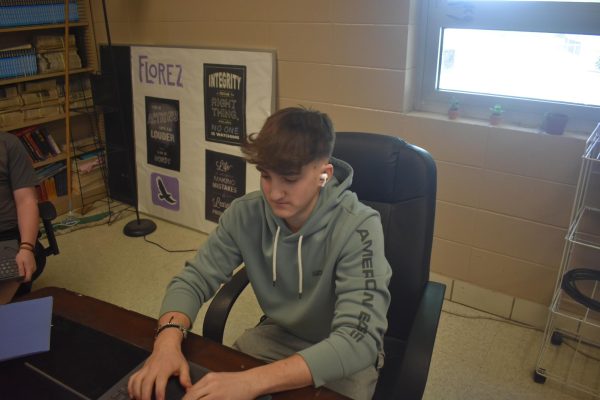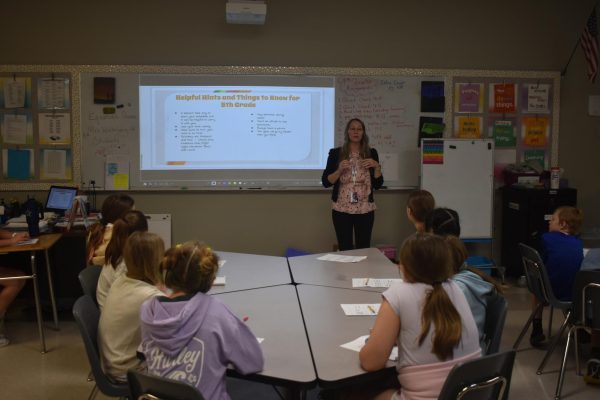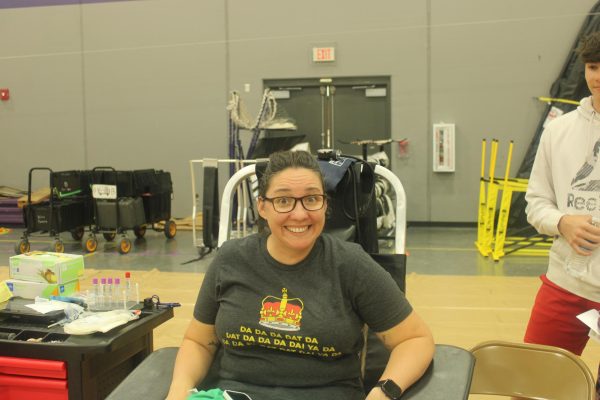The Cosmic Talk #7
February 25, 2020
Hey nerd! Welcome back to The Cosmic Talk. In today’s special edition, we will be following up on a paper that I discussed in the Cosmic Talk #4. That paper went over what we thought was to be an impossible black hole, known as LB-1. The black hole had a mass of about 70 suns, making it possible for the initial star to go supernova; more specifically, a special type known as Pair Instability Supernova. This means that the star should have exploded entirely, leaving nothing behind.
After the paper was released, astronomers assumed that the discovery was very unlikely to be true, and also noticed that there was a lot of flaw in the discovery process itself.
For starters, the distance between LB-1 and us was overestimated. Originally being about 4000 light years, it’s actually about 2000-2500. The second major problem was that if the black hole was as close as they said it was to its partner star, we would have seen a lot of X-ray emissions, but none were observed. This just helps to prove that it probably isn’t an impossible black hole, but what does that mean it actually is?
The most recent study released on the subject actually looked into the emission spectra of the partner star, since you can’t see the one of the black hole, to get a better idea of what was going on. Astronomers wanted to analyze what the star was made of, since that information helps us determine what type of system it is. When doing so, we discovered that there was a lot of helium a minute from the surface of the star, which is highly unusual. Normally the top of the star is made up of mostly hydrogen, and helium remains on the inside where most the burning takes place.
So what’s going on?
Well, there are certain stars known as helium stars and extreme helium stars. They are created when two smaller objects, such as two white dwarfs (which have a high concentration of helium in it of themselves) collide, initiating helium fusion to form one giant star. They start the burning reaction by combining the material from separate objects if their masses are less than 1.3 or 1.4 masses of the sun. They don’t explode, and they don’t go supernova, they just create a very active, very hot and very bright star known as a helium star.
There is also another explanation for this occasion, though. If a star’s outer hydrogen shell is sucked away by the orbiting object, like a black hole or a neutron star, or even a slightly larger more typical star, it exposes the helium core of the star if the star was initially big enough for that, leaving behind what would be considered a helium star. This causes the stars to burn helium and make energy a lot faster.
The scientists behind the latest paper believe this is the most likely scenario. The star isn’t as massive as what was originally said, and is actually more or less the same mass of our own sun and LB-1 (the black hole orbiting around it) is probably about 2-3 masses of our sun. That means it could be a very tiny black hole, which is very unlikely, or it could be a neutron star, or even possibly a normal star that just isn’t very bright in nature. This could be any object in reality.
Our current most plausible explanation is that it is an inactive neutron star, inactive due to the distance between it and the helium star.
Even though our original theory was wrong, this is still very exciting for the astronomy world because helium stars are very rare. We know very little about them, and this discovery will allow us to observe one and get a better grasp on how they’re potentially made, what they’re lifespan looks like, and of course how they die out. It’s all still very intriguing.
Though this is all very exciting, it helps lead into what my main discussion actually is for today’s edition: mistakes happen. This is a very common life lesson that we don’t always like to come to terms with. Its okay to make mistakes, it doesn’t mean that you’re dumb or misguided. Mistakes are just another way of learning no matter the situation. Maybe you chose the wrong answer on your math quiz, there’s no need to beat yourself up over it. Maybe you failed your drivers test, that doesn’t mean you should hold it against yourself. Maybe you found out that he or she just wasn’t for you after all this time on this valentines day, that’s okay, everything will turn out fine.
Mistakes. Happen.
Even those who some of us believe are the most elite, astronomers themselves, who have spent years of their lives learning about the ways and works of the universe, make mistakes, such as this one. It just allows us to learn from them and take on new discoveries with the knowledge we gained. One of my favorite quotes that fits this situation is, “The only certainty is the uncertainty.” Which means you can never be certain, you can never be sure, so mistakes will happen. Taking the risk to find the truth is what really matters.
That’s your life lesson for the day. I hope you all had a wonderful Valentine’s Day surrounded by those you love, or things you love, and for you space nerds out there, the moon, the sun and the stars. This has been the Cosmic Talk, until next time!










